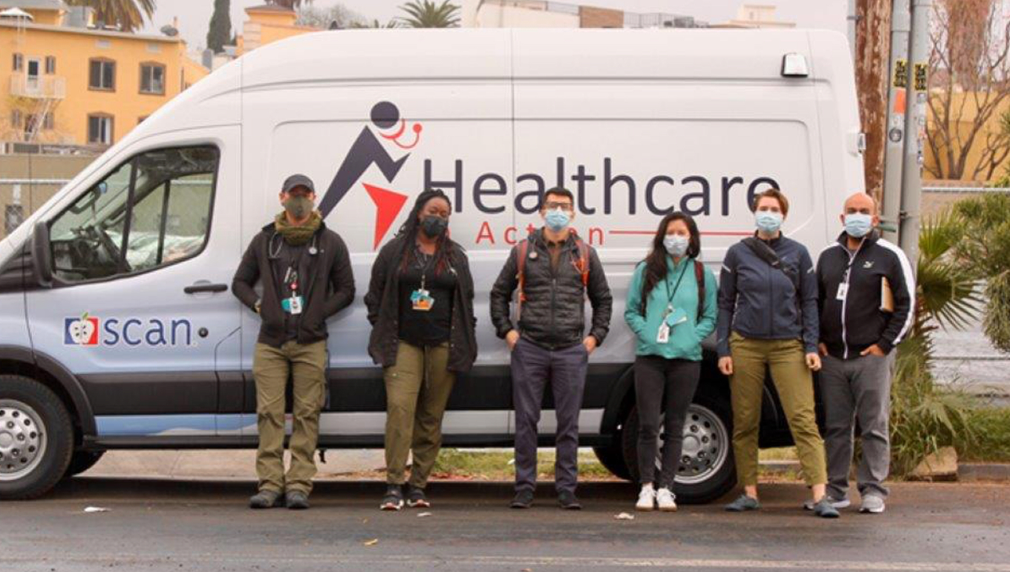Innovative Behavioral Health Strategies for Unhoused Adults
The project integrates Occupational Therapy (OT) services into HIA's street medicine program, focusing on treating unhoused adults in Los Angeles County. Through specialty care that includes cognitive-behavioral interventions and vocational rehabilitation, the initiative aims to transform the lives of this vulnerable population, promoting their recovery and overall well-being.

What is the primary issue area that your application will impact?
Health Care Access
In which areas of Los Angeles will you be directly working?
County of Los Angeles
In what stage of innovation is this project, program, or initiative?
Expand existing project, program, or initiative
What is your understanding of the issue that you are seeking to address?
HIA aims to address the significant healthcare needs and daily challenges of unhoused adults, particularly those with SUDs. Many people experiencing homelessness face challenges with daily tasks, healthcare management, and engaging in meaningful activities because of barriers to accessing important services. This, coupled with the complexities of homelessness, often results in reduced occupational performance and poor well-being. By incorporating Occupational Therapy (OT), tailored, evidence-based interventions are offered directly to those who need it the most, improving health outcomes and quality of life. OT interventions have been found to be effective in addressing substance use and promoting recovery and well-being for individuals with SUD. OT interventions can have positive effects on a range of outcomes for individuals with substance use, including improved occupational performance, reduced substance use, and increased social participation. (Ryan and Boland, 2020).
Describe the project, program, or initiative this grant will support to address the issue.
This project aims to address the occupational challenges and healthcare needs of unhoused adults living with SUDs by integrating OT into our care model. Our innovative approach uses the principles of "street medicine," enabling us to bring holistic, patient-centric OT services directly to the individuals where they are, be it in parks, shelters, or outside their tents. By doing so, HIA circumvents the typical barriers to healthcare faced by homeless individuals. Occupational therapists will provide evidence-based interventions such as activity-based, cognitive-behavioral, and vocational rehabilitation therapies, designed to promote engagement in meaningful activities, enhance occupational performance, and improve overall health and well-being. Our approach embodies a trauma-informed lens and a harm reduction model, building trust, promoting safe environments, and directly addressing the health inequities faced by the homeless. As part of the holistic care package, HIA also provides mental health services, social services, and housing navigation. The team uses a mobile clinic van as a meeting place to conduct services. The OT will work with our therapist and case managers to provide wraparound behavioral health services. Behavioral health interventions in street medicine will be successful in creating low barrier treatment options, thereby offering a comprehensive solution for promoting recovery, resilience, and a better quality of life for unhoused older adults.
Describe how Los Angeles County will be different if your work is successful.
The project intends to significantly improve the well-being and quality of life of unhoused adults suffering from SUDs by providing direct, holistic healthcare interventions. This will ultimately lead to a decrease in substance use, improvement in occupational performance, and an increase in social participation among this vulnerable population. A decrease in healthcare inequality is anticipated, as the initiative will bridge the "treatment gap" that prevents unhoused individuals from accessing necessary services. With success, evidence gathered from this project will be utilized to demonstrate the effectiveness of an integrated Occupational Therapy and street medicine approach. This could influence and encourage the allocation of more resources towards similar programs, expanding the reach of this care model to more unhoused individuals in the county and beyond.
What evidence do you have that this project, program, or initiative is or will be successful, and how will you define and measure success?
The success of the project will be gauged using qualitative and quantitative measures of patient satisfaction and improvement. Evidence-based assessment called the Canadian Occupational Performance Measure (COPM) is used to establish treatment areas and build goals that are patient driven. This will begin with a thorough intake conducted by a substance use clinician that assesses patient's substance use. Based on the intake, a treatment plan will be developed. Assessments will depend on the type of substance use endorsed by patients. Accessibility is a main goal in street medicine and clients should be involved in goal setting for treatment plans. Therapy will be a collaborative effort. Clinicians will assess each session for changes in substance use and attitudes towards use. Clinicians will always employ a harm reduction approach to ensure that patients maintain agency throughout their SUD treatment.
Approximately how many people will be impacted by this project, program, or initiative?
Direct Impact: 150
Indirect Impact: 1,000